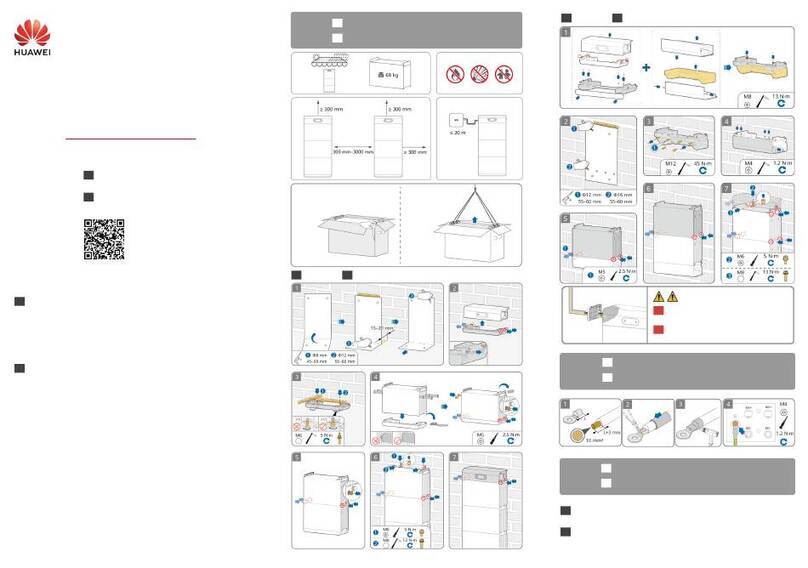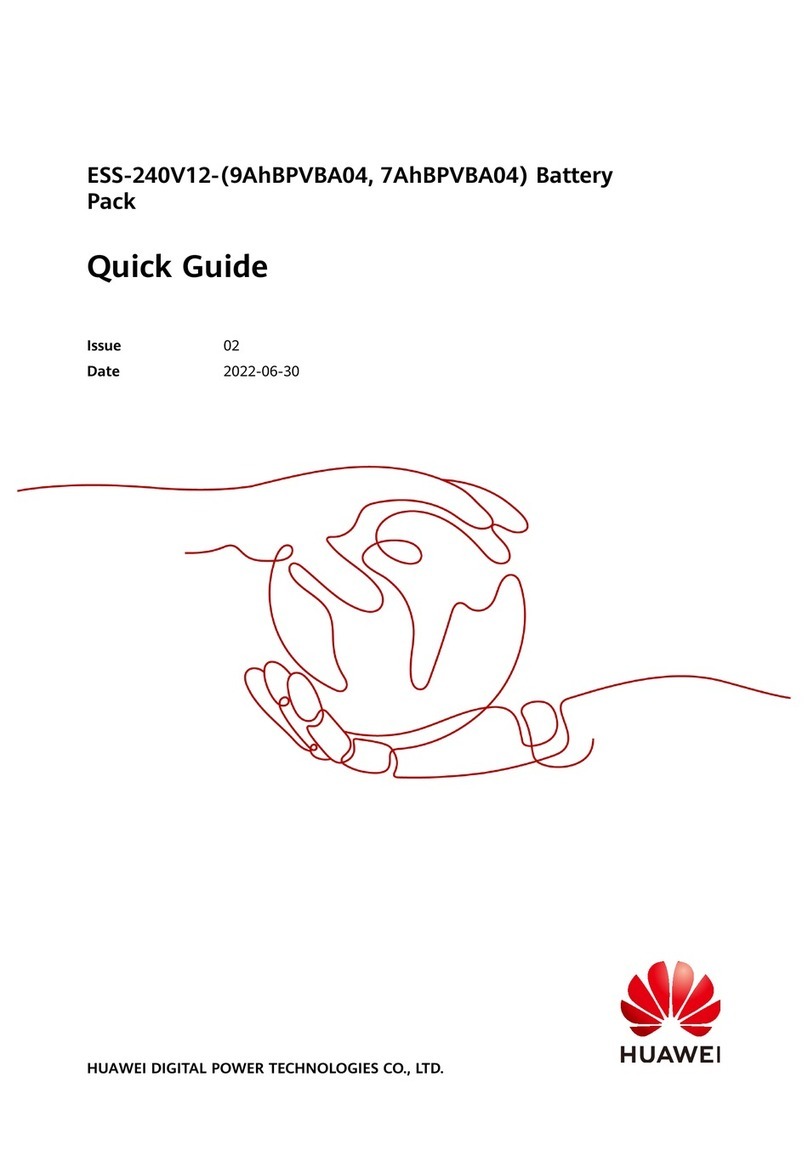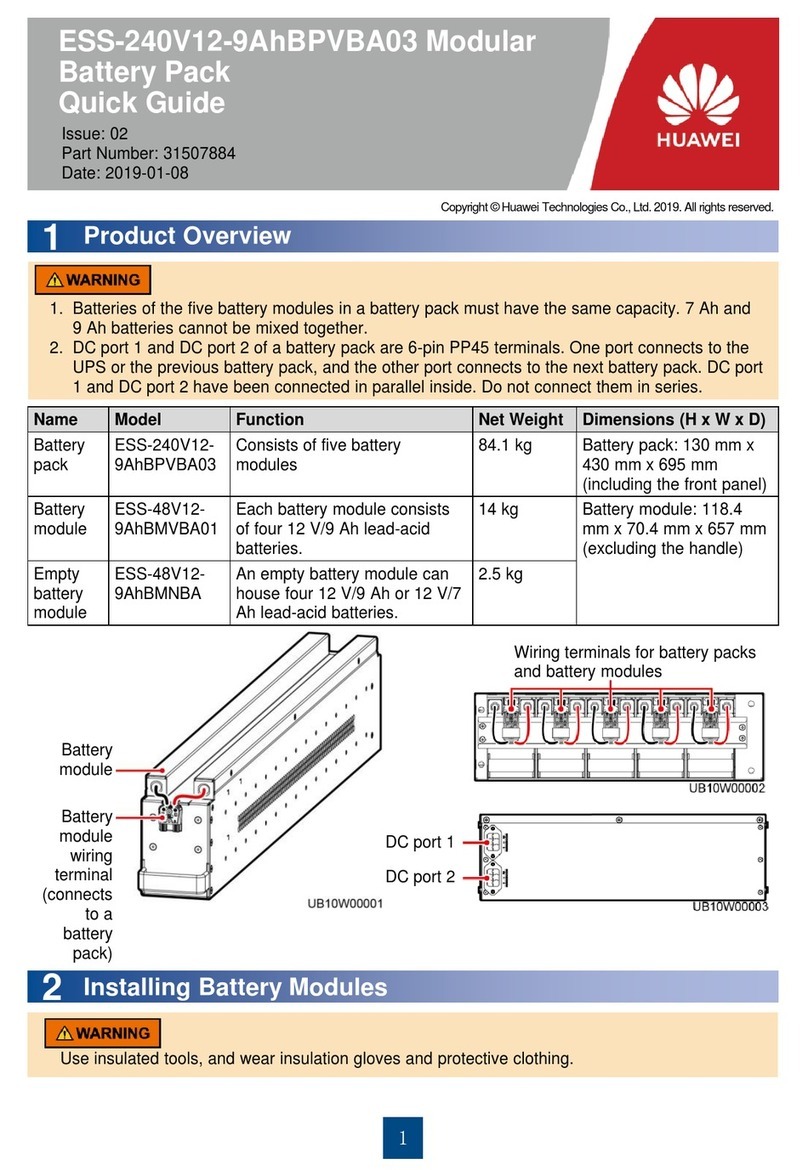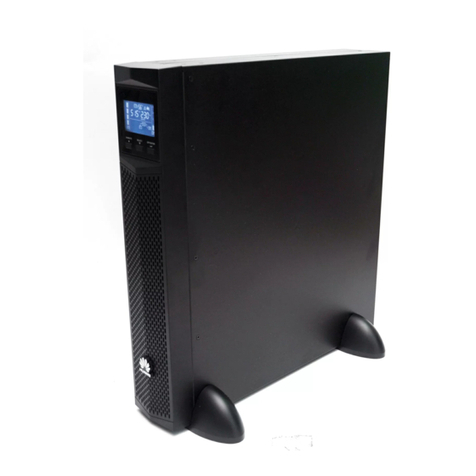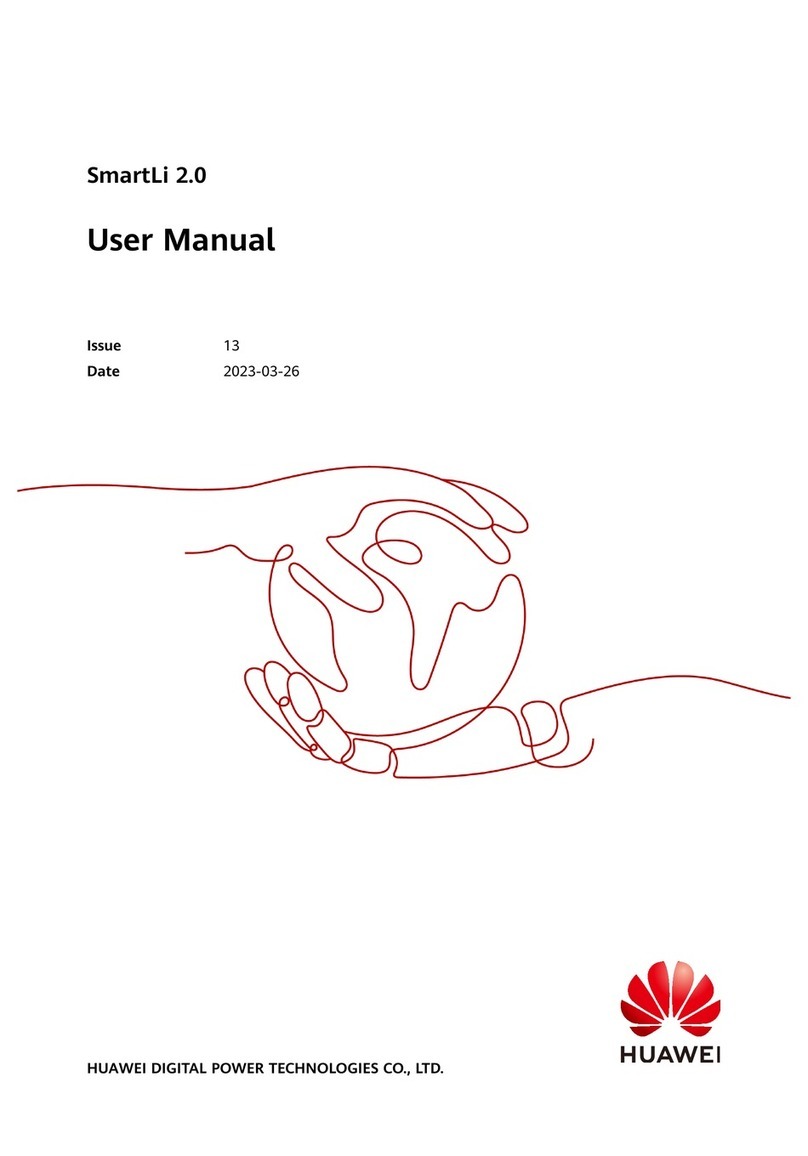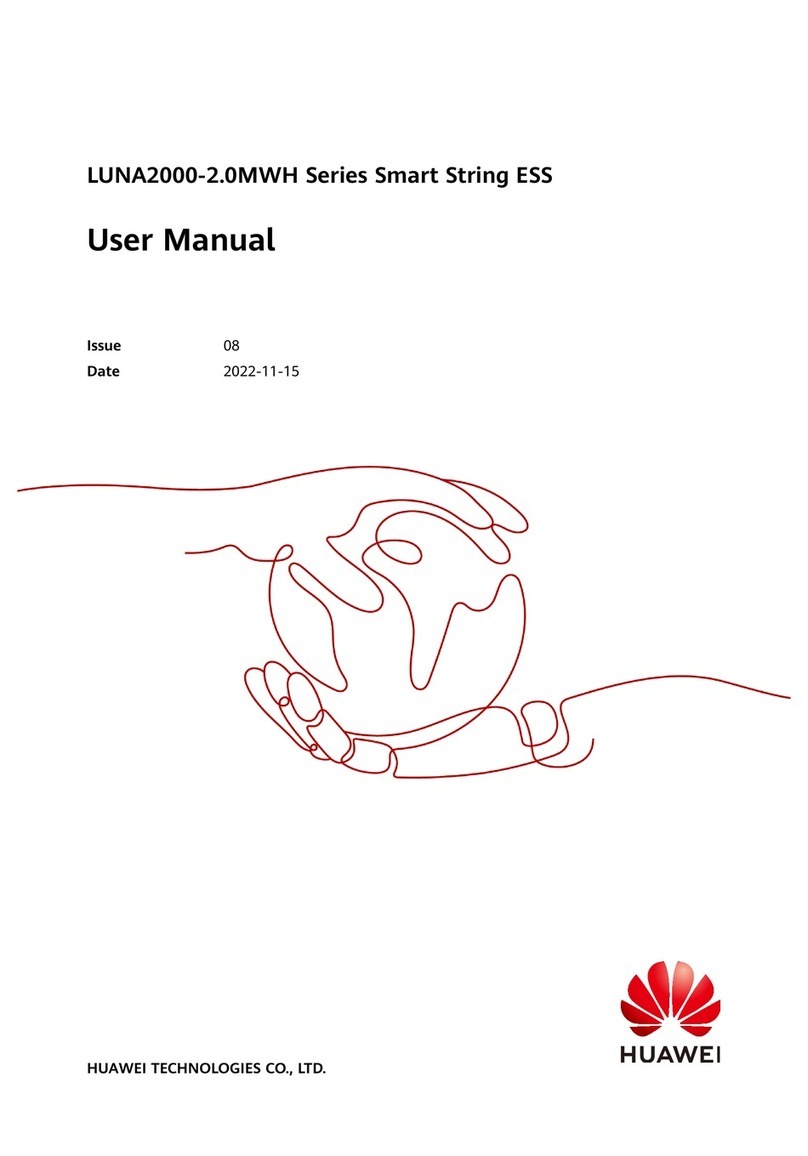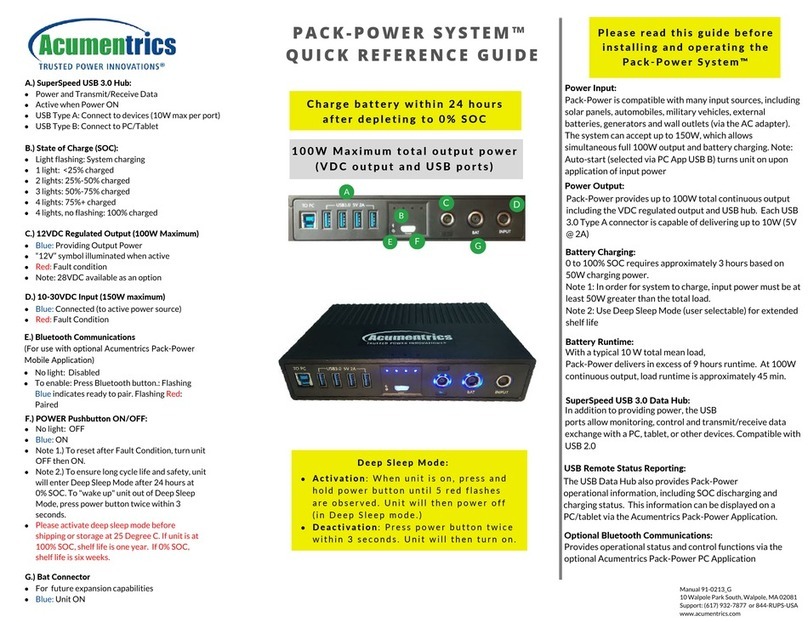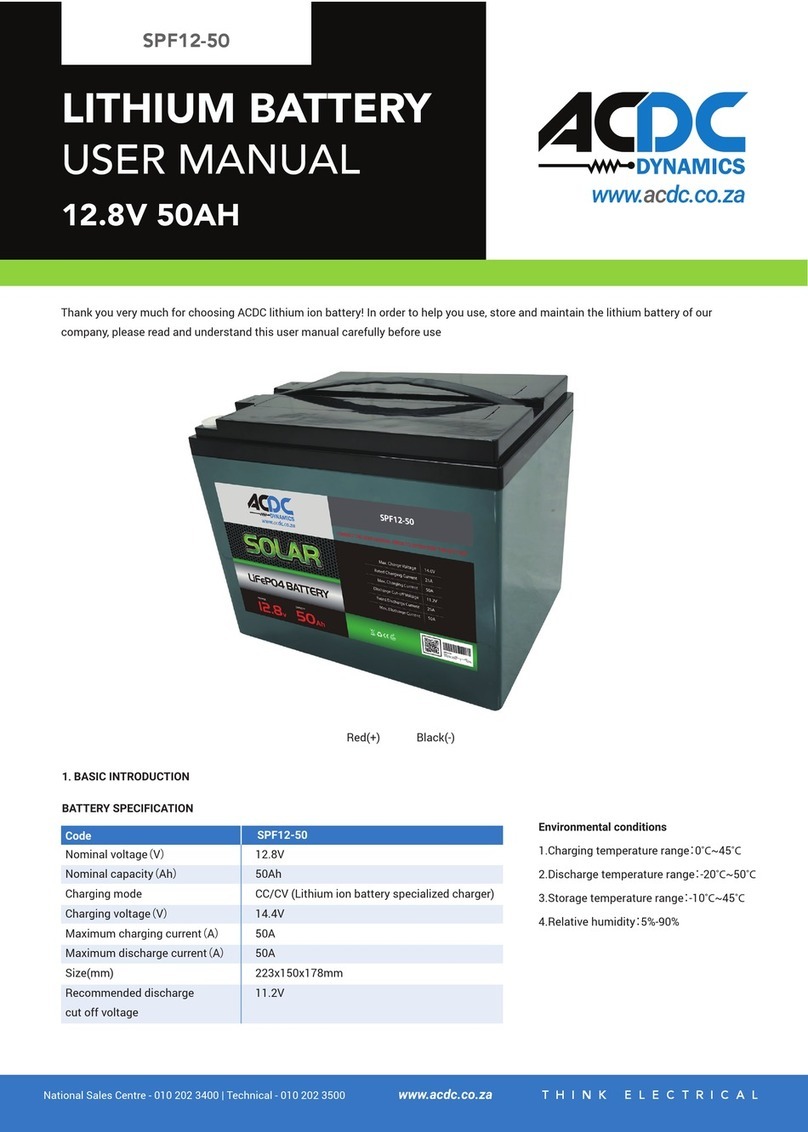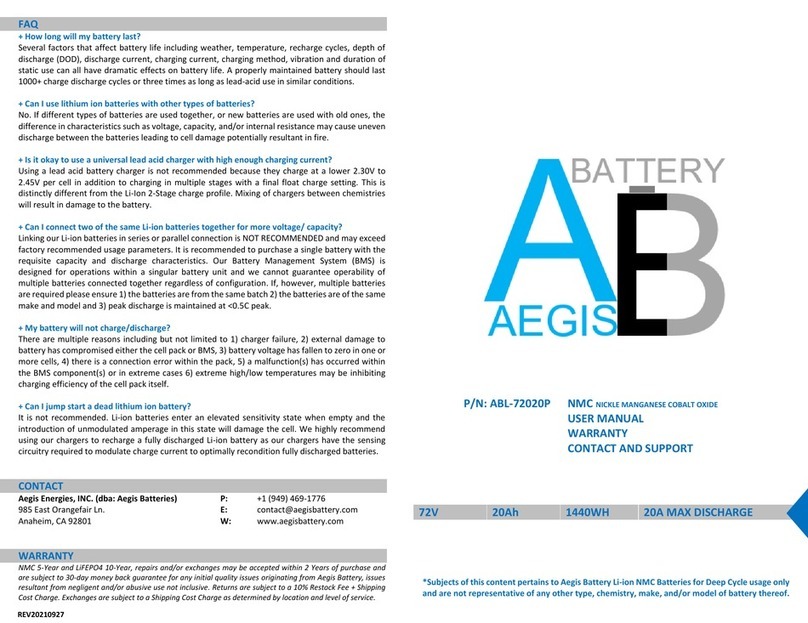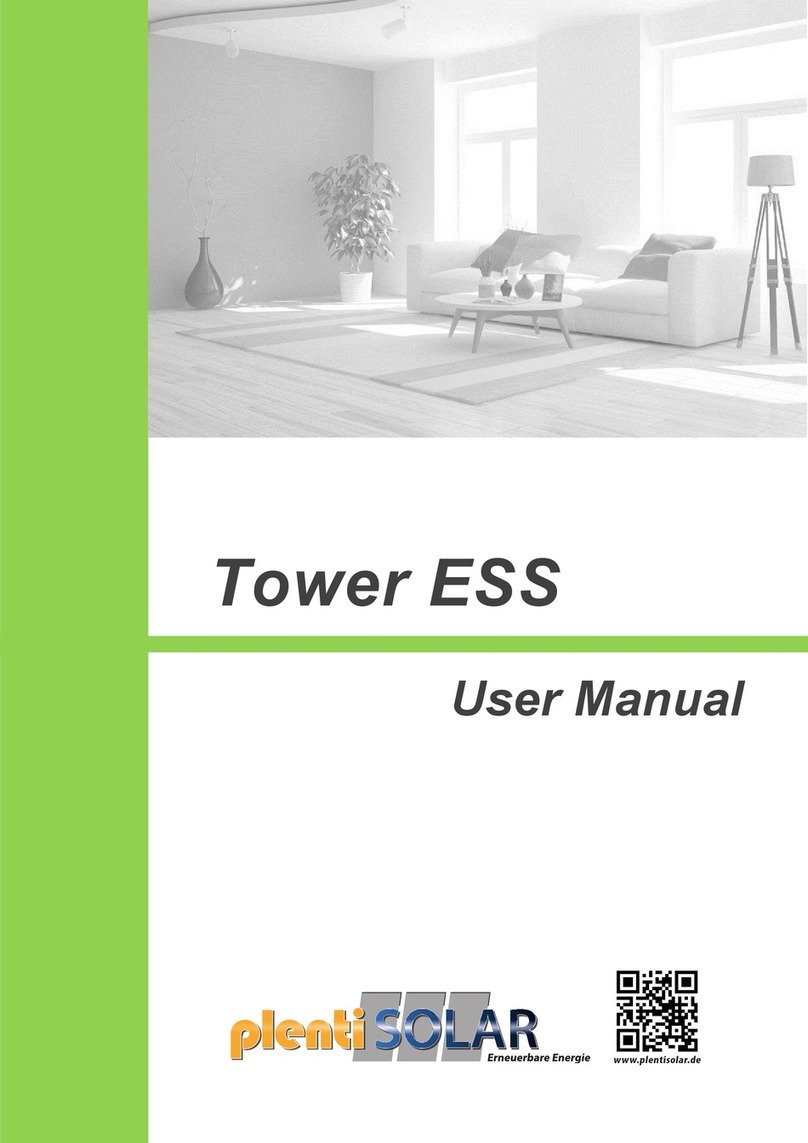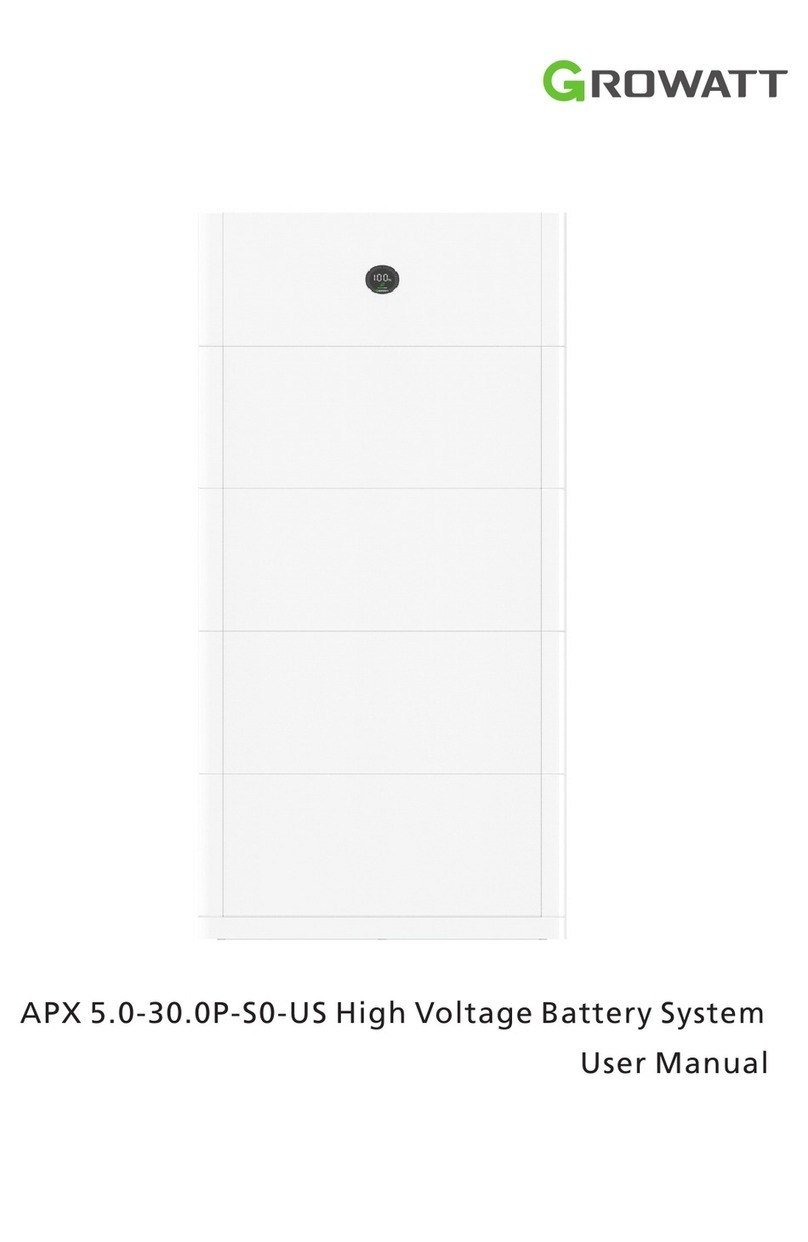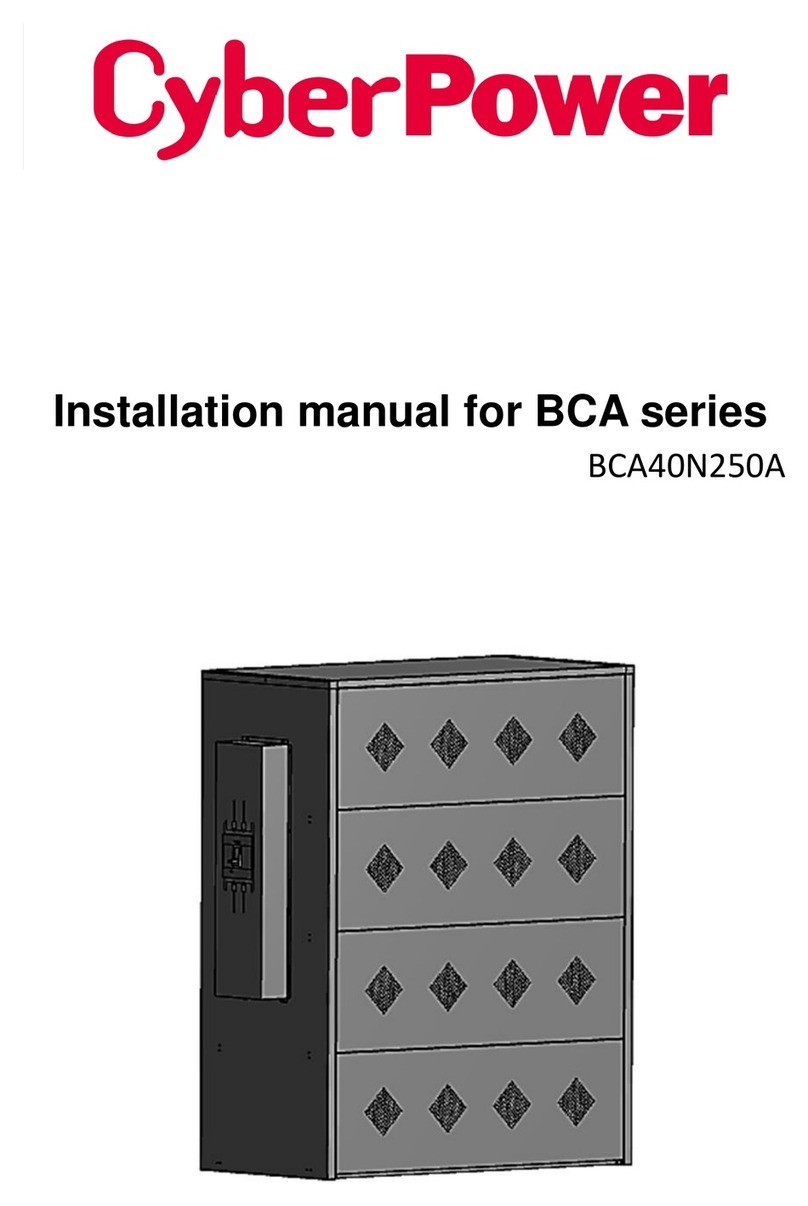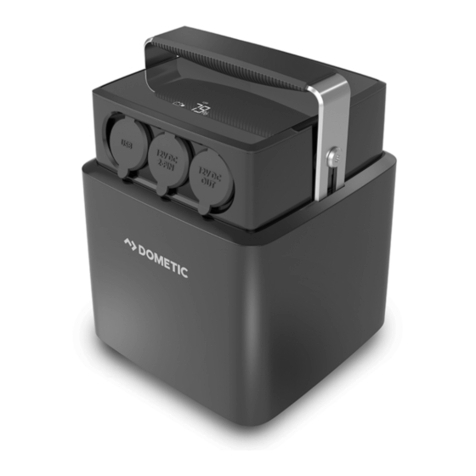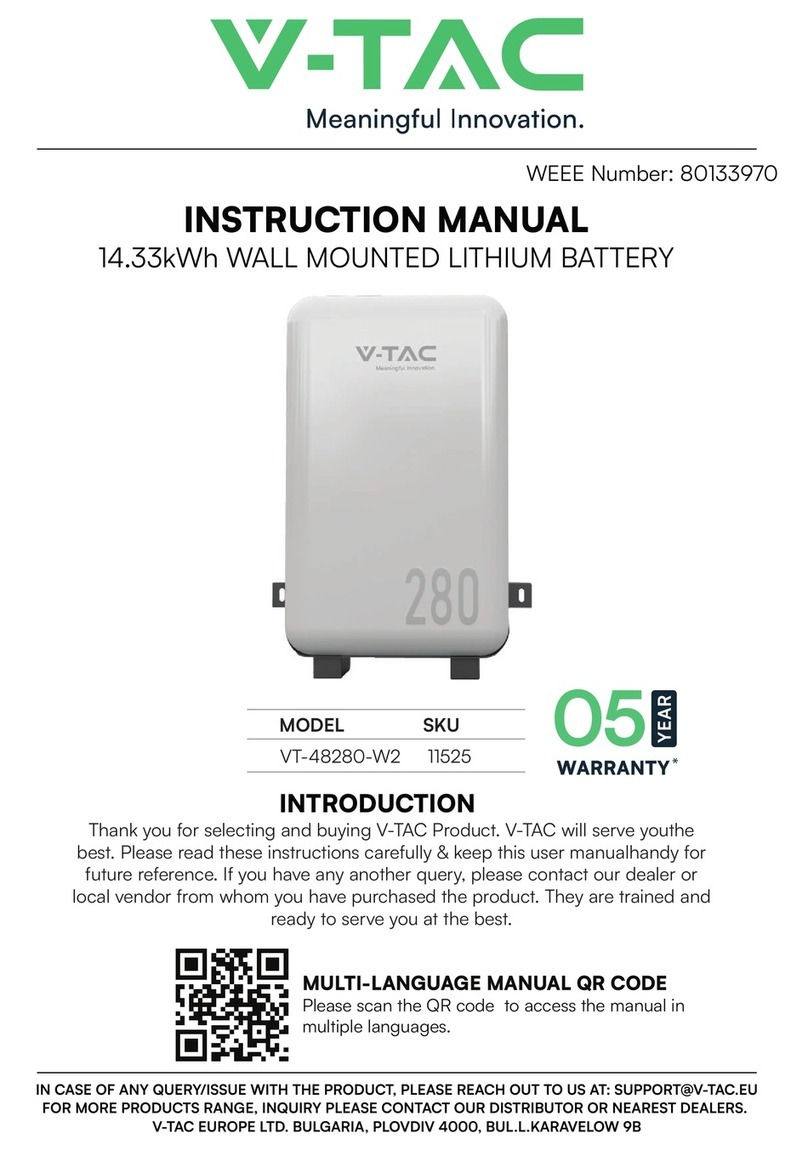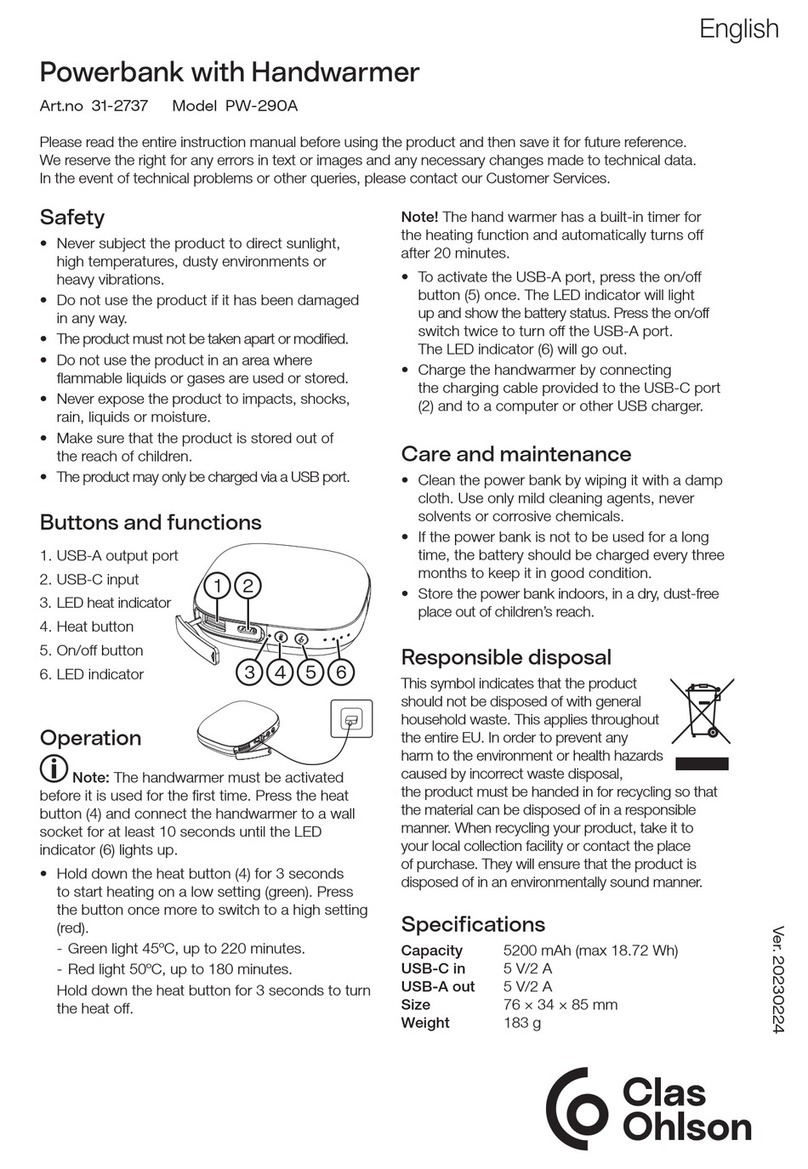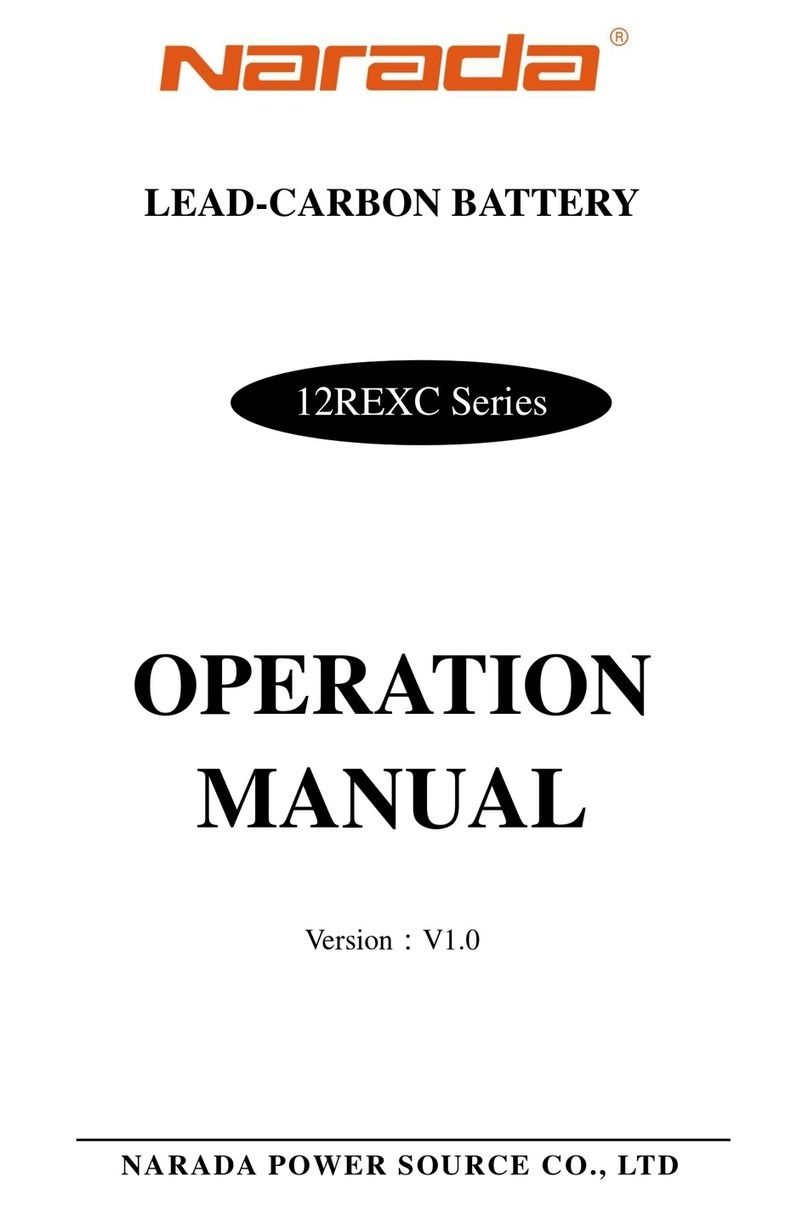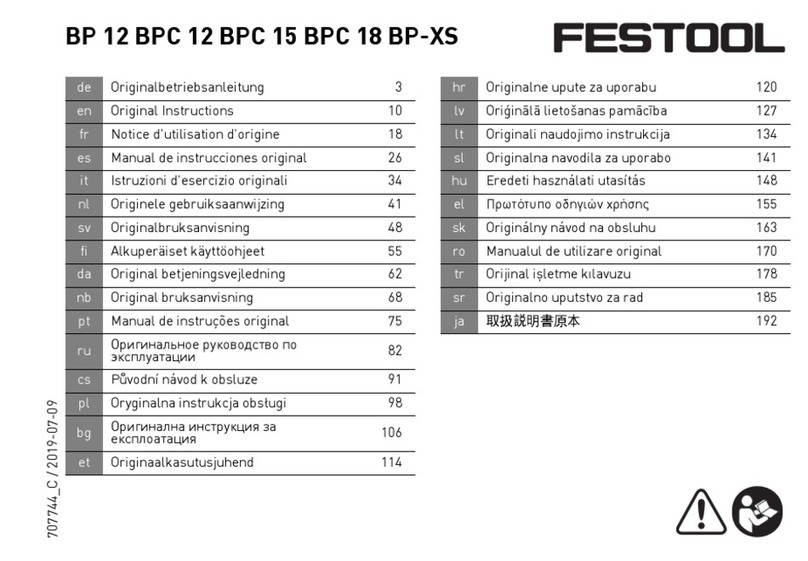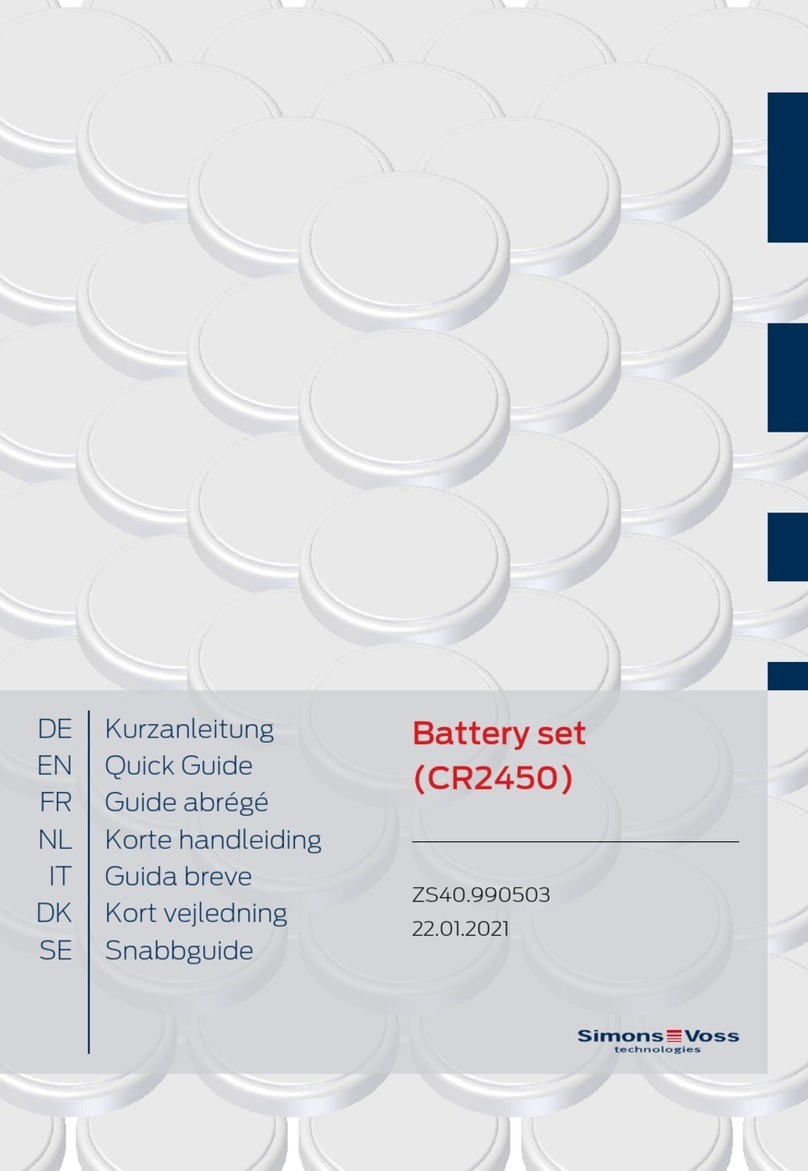
LUNA2000-(5-30)-S0
User Manual
Copyright © Huawei Technologies Co., Ltd.
Do not place irrelevant objects on the top of the equipment or insert them into any
position of the equipment.
Do not place inflammables around the equipment.
To prevent explosions and body injury, do not place batteries in a fire.
Do not place the battery module in water or other liquids.
Do not short-circuit wiring terminals of batteries. Short circuits can cause a fire.
Batteries may cause electric shocks and high short-circuit currents. When using the
battery, pay attention to the following points:
(a) Remove any metal objects from yourself, such as watches and rings.
(b) Use tools with insulated handles.
(c) Wear rubber gloves and boots.
(d) Do not place tools or metal parts on top of batteries.
(e) Before connecting or disconnecting battery terminals, disconnect the charging power
supply.
(f) Check whether batteries are accidentally grounded. If it is accidentally grounded,
remove the power supply from the ground. Touching any part of a grounded battery can
cause an electric shock. If these grounding points are removed during installation and
maintenance, the possibility of electric shocks can be reduced.
Do not use water to clean electrical components inside or outside of a cabinet.
Do not stand on, lean on, or sit on the top of the equipment.
Do not damage the modules of the equipment.
1.2 Personnel Requirements
Personnel who plan to install or maintain Huawei equipment must receive thorough
training, understand all necessary safety precautions, and be able to correctly perform all
operations.
Only qualified professionals or trained personnel are allowed to install, operate, and
maintain the equipment.
Only qualified professionals are allowed to remove safety facilities and inspect the
equipment.
Personnel who will operate the equipment, including operators, trained personnel, and
professionals, should possess the local national required qualifications in special
operations such as high-voltage operations, working at heights, and operations of special
equipment.
Only professionals or authorized personnel are allowed to replace the equipment or
components (including software).
Professionals: personnel who are trained or experienced in equipment operations and are clear of the
sources and degree of various potential hazards in equipment installation, operation, and
maintenance
Trained personnel: personnel who are technically trained, have required experience, are aware of
possible hazards on themselves in certain operations, and are able to take protective measures to
minimize the hazards on themselves and other people
Operators: operation personnel who may come in contact with the equipment, except trained
personnel and professionals


